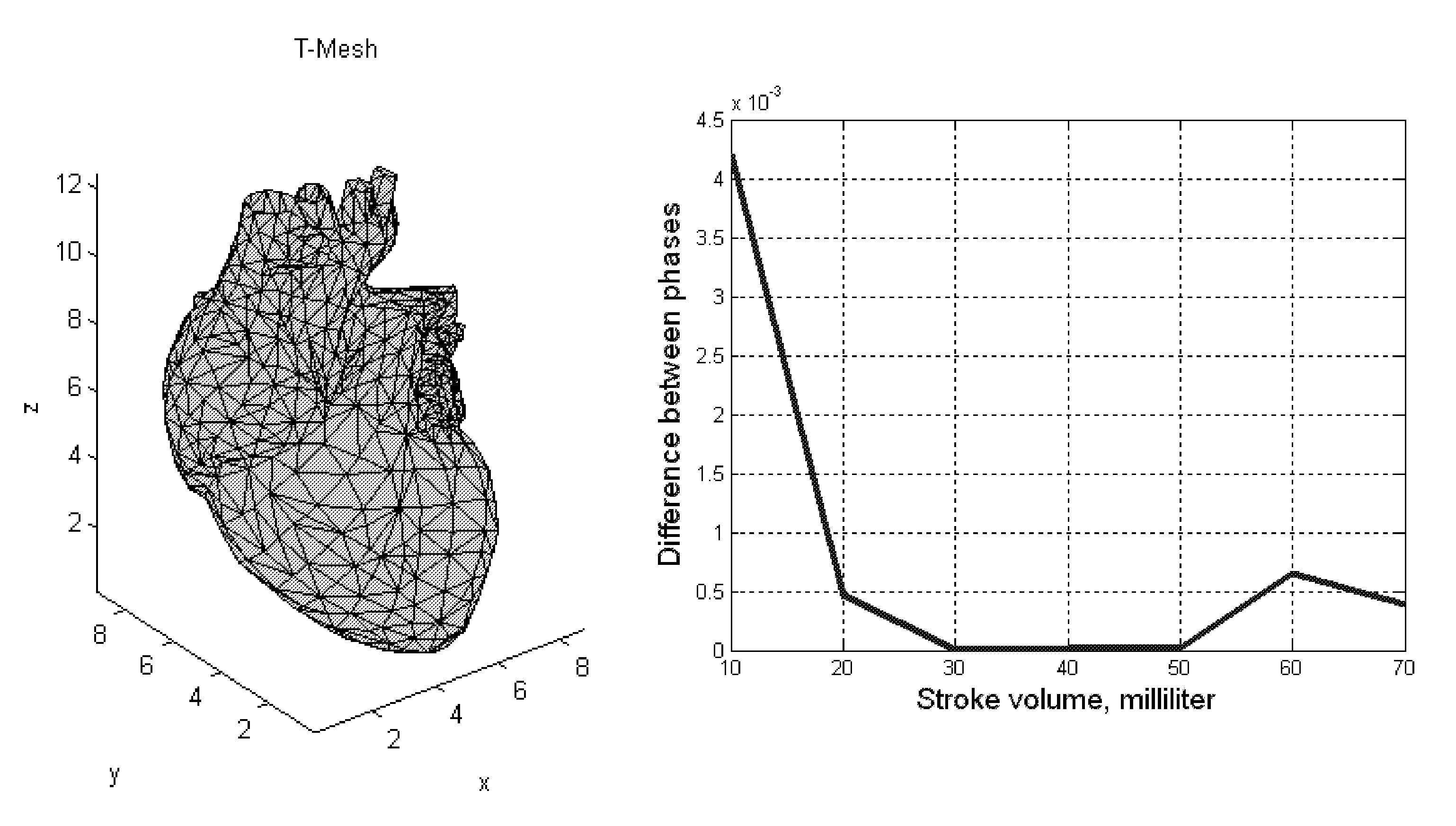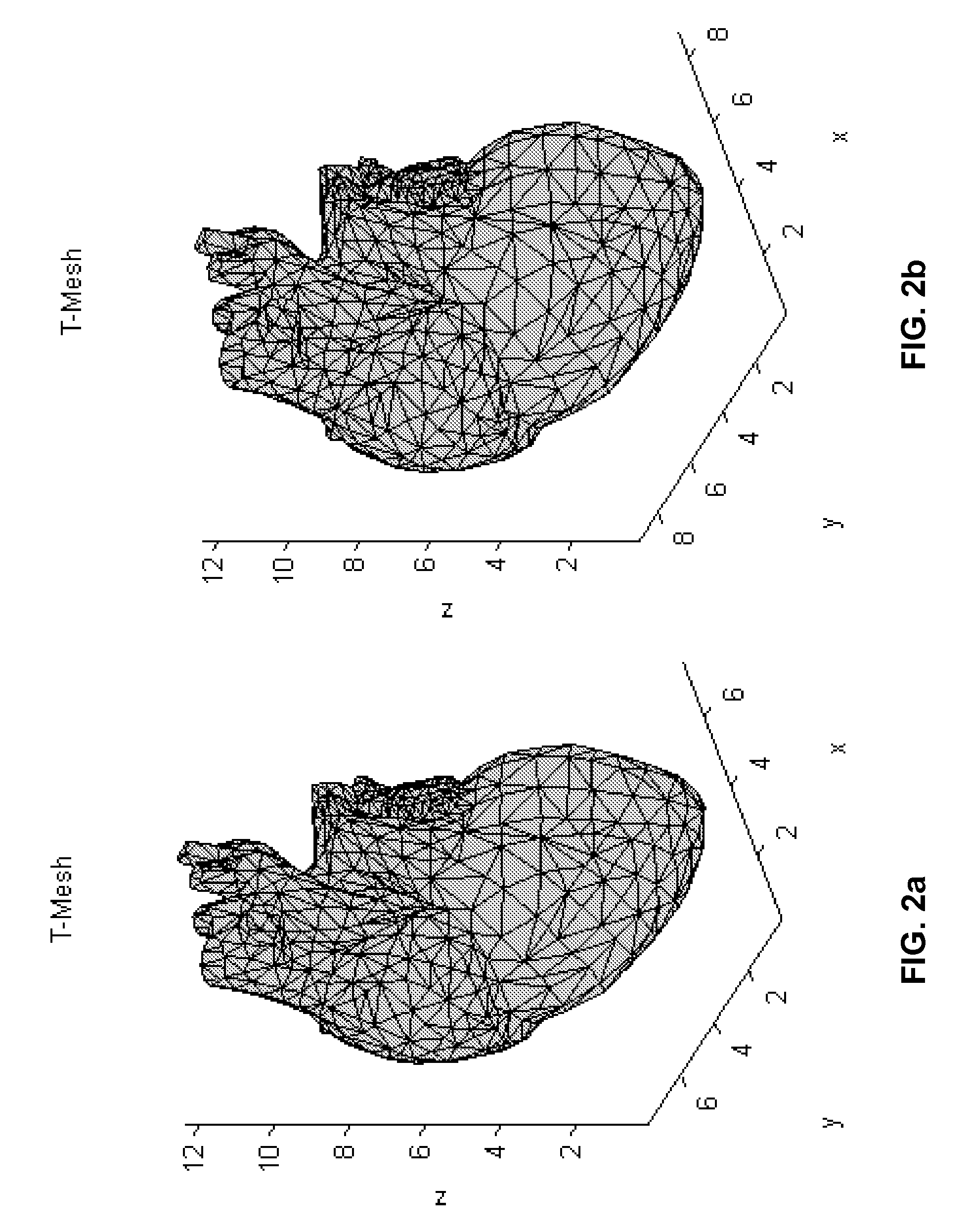Heart failure is a disorder in which the heart pumps blood inadequately, leading to reduced
blood flow, back up and congestion of blood in the veins and lungs, and other changes that may further weaken the heart, eventually leading to death.
Diastolic dysfunction refers to the diastolic properties of the
ventricle and occurs when the
ventricle becomes less compliant or stiffer, which impairs ventricular filling.
The reduction of stroke volume during hemorrhage reflects the degree of
blood loss, but accurate assessment of stroke volume during
emergency situations in the field is currently not possible.
Current devices and techniques suffer from several serious limitations, including but not limited to: extreme and risky invasive application, the need for direct attachment of devices to the subject, complicated operation and / or interpretation allowing only skilled individuals to effectively use the devices,
exposure to exceptionally hazardous
ionizing radiation, large and bulky systems which prevent mobility and flexible utility in field settings, and, among others, defeat by physical barriers.
Effective, mobile systems that can easily be used by a responder are not available.
A significant problem associated with an ECG is that electrical signals do not necessarily give a direct indication of the heart's actual pumping status.
This false positive, pulse less electrically activity, can obviously lead to
confusion for the caregiver or emergency responder, potentially causing inappropriate treatment.
Merely sensing that the heart is beating electrically still may not provide sufficient information to determine whether the left and
right ventricles are actually contracting, and thus outputting blood, Further, using traditional ECG-based methods, it can be difficult to determine whether each of the ventricles are in fact contracting in
unison and thereby evenly distributing blood.
Echocardiography is generally suitable only for single batch measurement and cannot be easily adapted for continuous or instantaneous monitoring.
Again, these echocardiography techniques provide single measurements and cannot be easily adapted for continuous or instantaneous monitoring.
Echocardiography has other practical limitations.
The
ultrasound-imaging machines used in echocardiography are bulky, power hungry, expensive, and technically complex.
Additionally,
ultrasound waves do not propagate well through either bone, such as the ribs or sternum, or air, resident in lungs, which can create an acoustic impediment to tracking
heart motion.
In fact, some patients cannot be ultrasonically imaged because of poor acoustic windows.
Because of these limitations, echocardiography is typically limited to intermittent use in a hospital or clinical environment and has never been know to be used as a continuous, mobile long-term monitoring technique.
Due to its extremely invasive nature,
cardiac catheterization can introduce a wide range of complications, including bleeding at the puncture site,
cardiac arrhythmia, cardiac
tamponade,
vein or
artery trauma, low
blood pressure, infection,
embolism from blood clots,
allergic reaction, hemorrhage, stroke or death.
Although
cardiac catheterization can provide useful information concerning cardiovascular function, the associated risks posed make it undesirable for many patients.
In fact, cardiac catheterization, in and of itself, can be a significant contributor to subject morbidity.
Multiple or serial determinations are not feasible.
Since the collection and accurate analysis of a large bag of
expired gas is difficult, as required in the “direct” Fick methodology, the “indirect” Fick relies on an assumption of the average expected
oxygen consumption.
However, the indirect Fick still requires invasive sampling of arterial and
venous blood with catheters to obtain the arterial venous
oxygen difference.
In addition, the assumption of
oxygen consumption is very likely to introduce error in the final calculation of
cardiac output.
Additionally, as with the “direct” Fick method, given the need for significant personnel and lab requirements, this technique is only used in cardiac catheterization and research laboratories.
Again, as with other undesirable
catheter approaches, this technique also requires invasive
catheter access to both the central venous and arterial systems, with all its associated potential complications.
Indicator
dilution methods using dyes are rarely performed today.
Due to associated negative impacts,
dilution measurements cannot be performed too frequently, and, can be subject to error in the presence of certain
muscle relaxants.
However, as with other cardiac catheterization techniques, the invasive
catheter requires trained personnel for placement and repeated injections.
Although monitoring for days is possible, longer periods are associated with catheter related infections and other complications.
However, other features such as
lung congestion can affect this measurement.
 Login to View More
Login to View More  Login to View More
Login to View More 


